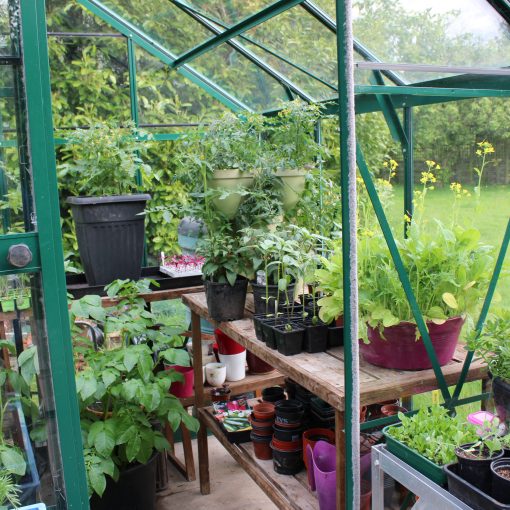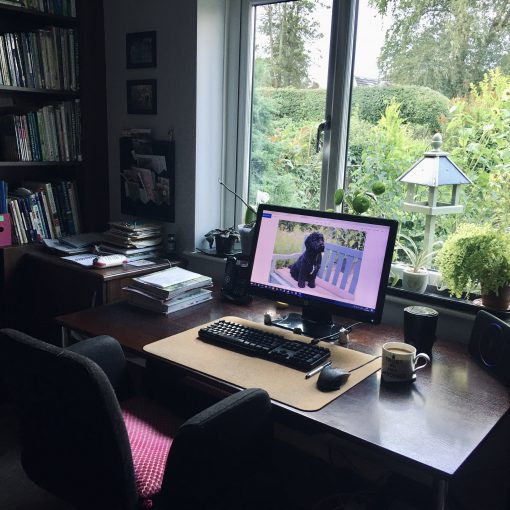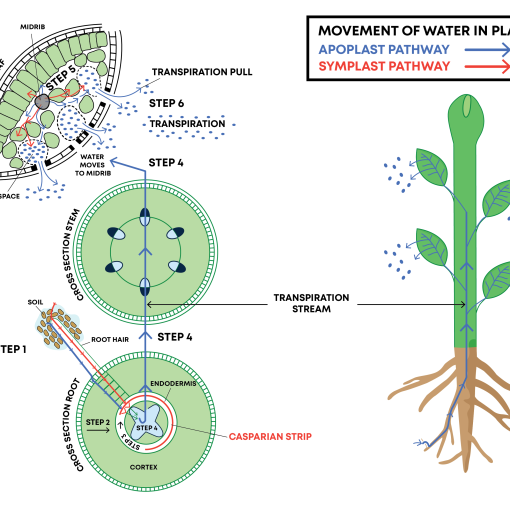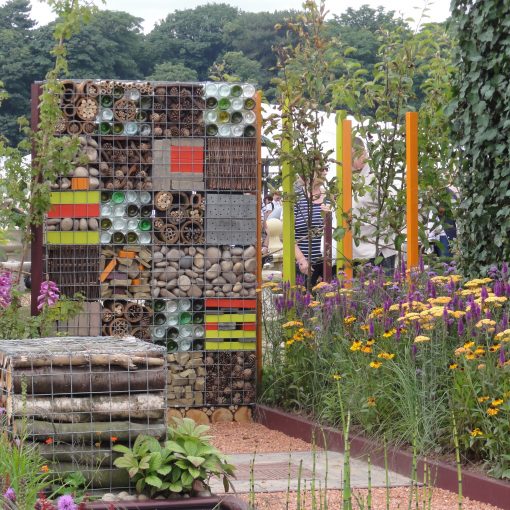R2111 The site survey.
Syllabus learning Outcomes
1.1 Describe how to identify potential hazards and risks on a site, including overhead and underground hazards (eg electric cables)
1.4 State why it is necessary to identify the existence of overhead and underground services.
Introduction
There is a big focus on risk assessment in the syllabus and rightly so. Our eyes glaze over when the term risk assessment is mentioned but not doing this correctly may mean someone dies or lives are changed forever due to injury or financial loss.
This blog focuses on overhead and underground services, why it is necessary to locate their exact position (map them) and the potential risks associated with them.
What is risk assessment?
This is a process where you identify hazards that have the potential to cause harm to humans together with assessing the likelihood of this harm happening and the possible consequences. The final stage is to set out a plan of action to reduce, control or eliminate the risk.
Types of overhead and underground cables
Overhead cables
These include telephone wires and electricity power cables. Do not mistake overhead power lines on wooden poles for telephone wires. You do not have to touch power lines for the electricity to arc downwards so it is not just about touching cables – there is also a recommended distance between power lines and any objects. I worked with a community group who looked after planters on a railway station and they were not allowed to take water to the platforms because if sprayed upwards, electricity could arc downwards from the power lines. In a domestic garden outdoor electrical sockets need to be included in the risk assessment.
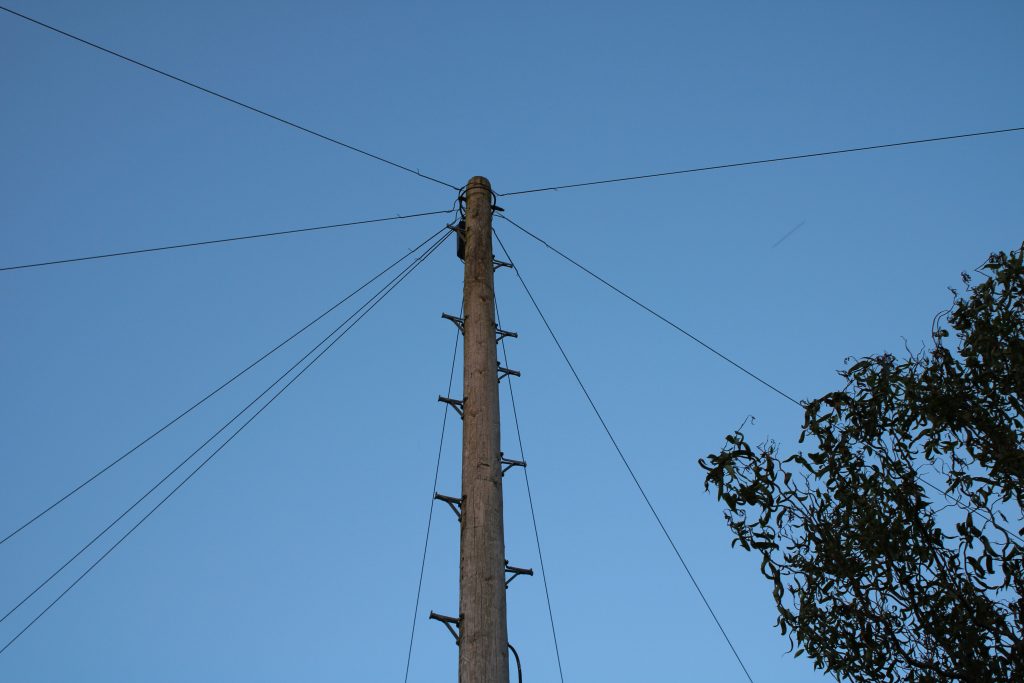
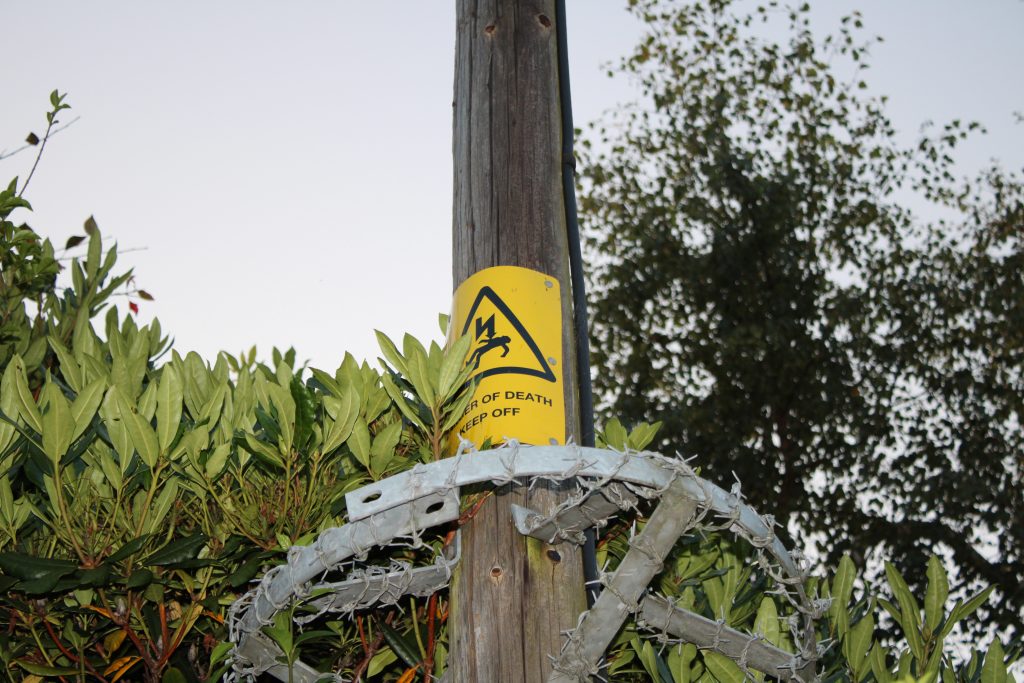
Underground services
These can include electricity cables, water mains, gas supply pipes, sewage/waste water pipes, oil pipes, cables for phone / TV and other gases or substances (if near a factory/hospital)
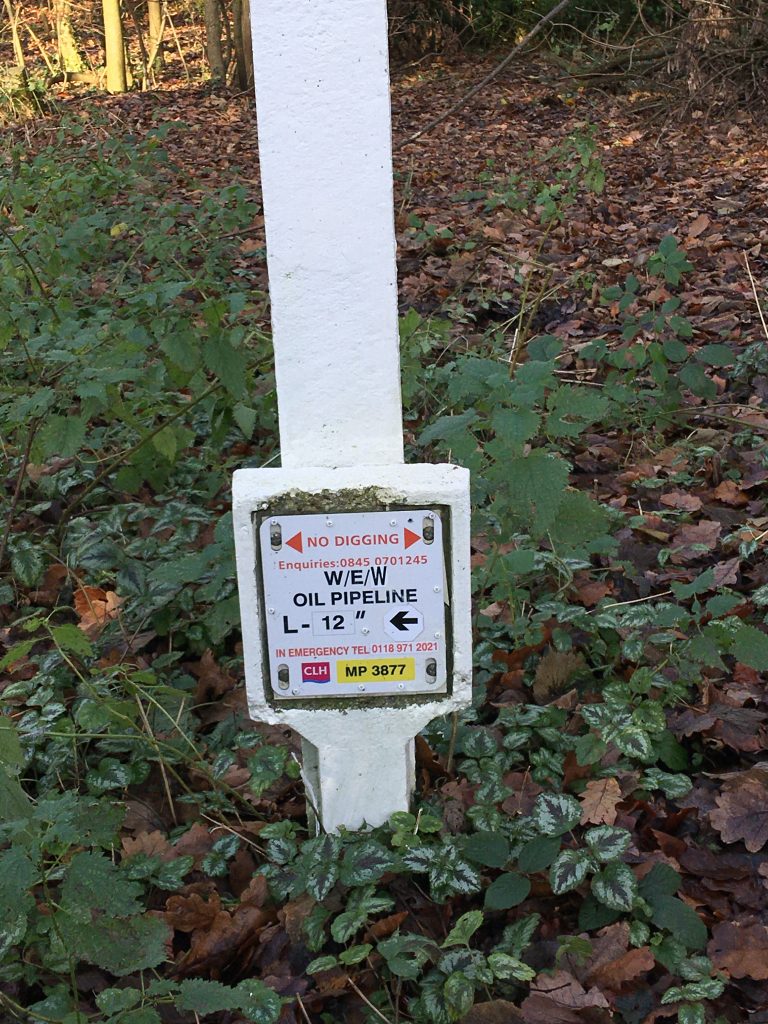
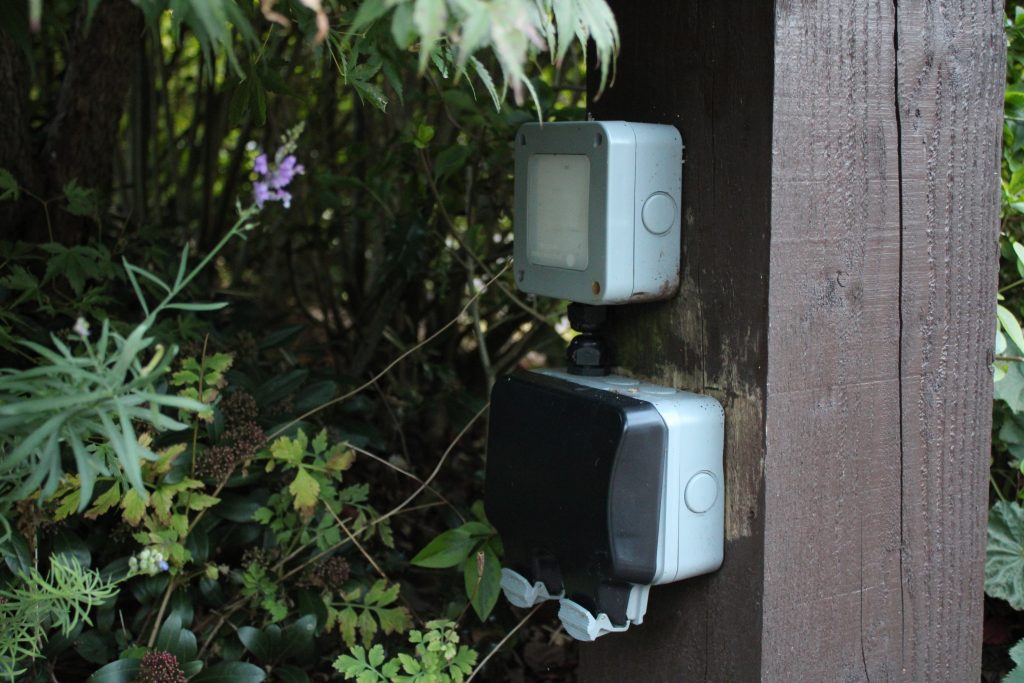

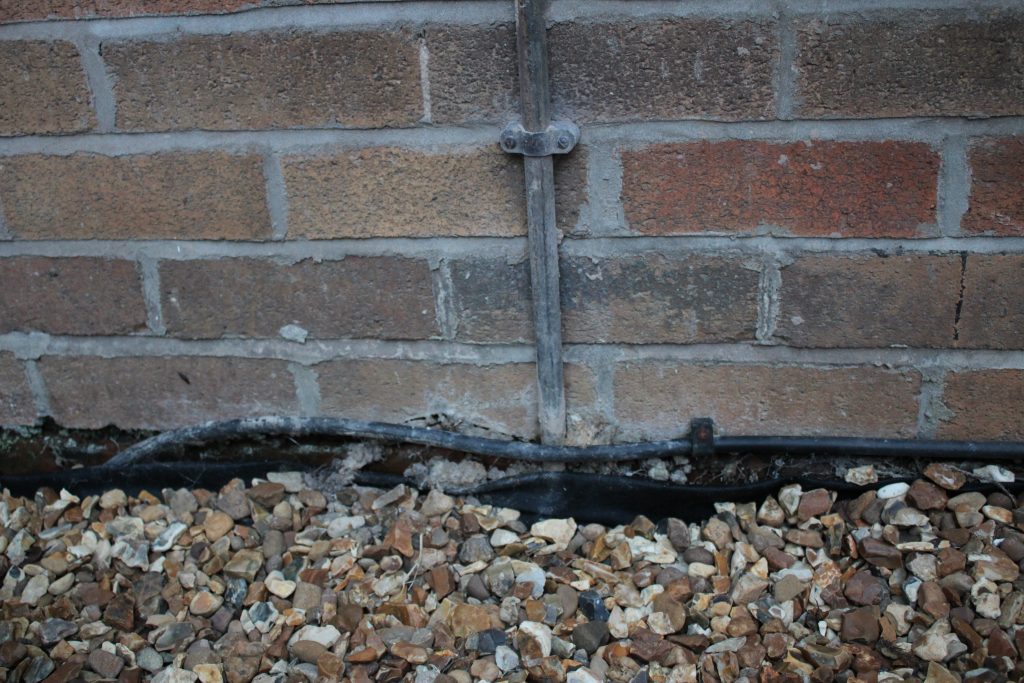
Why is it necessary to identify overhead and underground services?
It is essential to map the exact location of such services and determine how they will impact the design and the construction of the final garden. They must also be considered in the risk assessment. Locating the position of these services and marking them on the survey plan is called mapping.
Mapping of services is essential to:
- prevent injury and death eg electrocution or explosion.
- prevent environmental damage from eg sewage escape
- prevent waste of resources such as water through damaging water mains
- prevent damage to property from either flooding / gas explosion.
- prevent a major disruption of services elsewhere
- limit additional expenditure for repairs
Impact on Design
- They may dictate where paths / planted areas go – underlying cables could have hard landscape features sited above them at a depth which will not disturb any services.
- They may limit the design / planting eg manhole covers need to remain accessible.
- Tanks for oil storage may want disguising / screening.
- Where there are underground utilities (even if buried deep) any digging is risky so minimal ground disturbance is preferred in these areas and so will affect the design. E.g. no pond in that area.
Impact on Construction
Location of services will determine the approach to construction as they may limit where excavations can be made (underground services) and where machinery can move (overhead lines may tangle with machinery or the clearance height between machinery and electricity lines cannot be maintained.)
Impact of damage to services
If services get damaged possible consequences are:
- Repairs that are costly and delay progress.
- Pollution eg from leaking sewage / oil.
- Waste of resources eg gas / water.
- Flooding eg water pipes cracked by machinery.
- Ground collapse from damaged sewers.
- Fire eg if a gas leak from a pipe breakage ignites.
- Explosion eg if a gas leak from a pipe breakage ignites.
- Health issues eg from contaminated water mains, injury from water jet under pressure.
- Electrocution / burns /death from contact with live cables.
- Disruption to services and neighbours.
Avoiding utilities and mapping their location
- They may be already recorded on house plans especially if it is a new build house or has had an extension.
- Request drawings from underground service providers. This should be done for all projects that involve excavation or penetrating the ground.
- There may be signage above ground which indicate there are services below ground.
- Look for physical signs to indicate their location such as inspection hatches, street lights and telecoms boxes.
- Survey using detection tools.
- If necessary an option maybe to carefully excavate trial holes to verify their location, depth and identity – this should be done by someone qualified in utilities mapping.
- Plan work to avoid working near / disturbing services.
- f plans cannot be obtained then work on the assumption that there are services.
- If there is a fountain in a pond there must be electricity supply (unless it is solar powered) so use visual clues which indicate presence of services.
How to minimize risks associated with electrical supply or other underground services:
- Locate and map the position of services and mark them on the survey.
- Here is a website link which describes different tools used for detecting services: https://www.cablejoints.co.uk/sub-product-details/cable-detection-cable-locators/locating-buried-underground-cables
- If any digging is to be done near services mark them out on the ground before work starts.
- When working anywhere near electric power isolate the circuit and turn it off.
- If using electric equipment fit an RCD (residual current device) – a circuit breaker
- If installing new services like a cable supplying a pond pump or garden lighting, bury to a depth according to HSE guidelines and cover with hazard tape. Use professional qualified contractors.
- Use armoured cable if installing
- Make sure outdoor sockets are watertight and cannot be accessed by young children.
- No smoking while excavating – sounds obvious but I have seen many a person in a digger with a fag in their mouth!
How to minimize risks associated with overhead services.
- Locate and map the position of services and mark them on the survey stating their height above ground level.
- Determine the safe clearance distance between overhead service and objects/equipment/persons.
- When planning excavations and movement of machinery, avoid areas where these services are located.
- Do not stack materials or large piles of soil underneath electric cables.
- Seek advice from an expert in this field.
Further reading
See https://www.electricalsafetyfirst.org.uk/guidance/safety-around-the-home/garden-safety/


